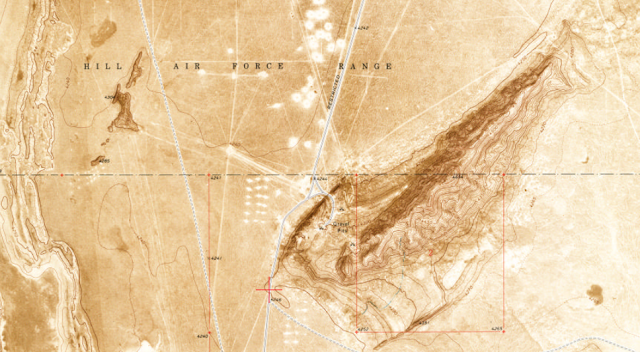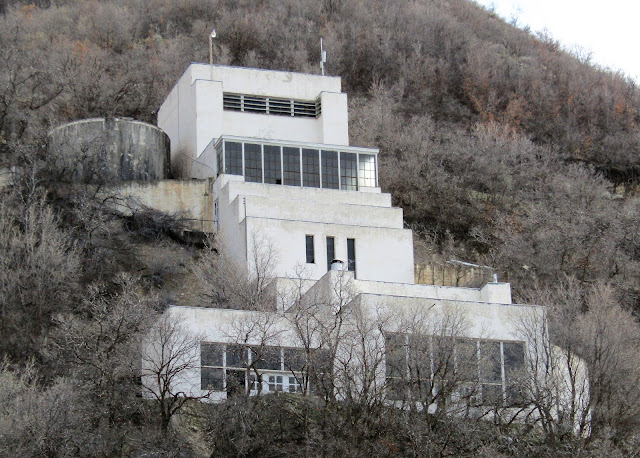Trouble at the Hogle Zoo
by Peter
Place yourself in the shoes of Captain R.D. McCollim, director of the Hogle Zoo in 1935. Your zoo, which traces its roots to a monkey exhibit in Liberty Park in 1911, has recently moved to an expansive new area at the mouth of Emigration Canyon. This area, donated by Mr. and Mrs. James Hogle in 1931, allows the zoo to escape the community disapproval occasioned by the repeated escapes of your prize elephant, Princess Alice. Alice, who had been bought from a traveling circus using pennies and nickels scraped together by schoolchildren, was in the habit of breaking out of her enclosure and roaming the Liberty Wells neighborhood, often with washing lines draped across her shoulders.
However, as the Depression has deepened your financial backers, the Salt Lake Zoological Society, have struggled to provide sufficient funds to care for the animals they have placed under your direction. These include 58 monkeys, nine lions, six buffalo, nine elk, and an indeterminate number of deer.
Already, 1934, the zoo had its water shut off for non-payment of a nearly $200 bill. At the time, you, Captain McCollim, threatened to simply turn the animals loose in the city if money was not found. Apparently someone provided the money as no animals were released.
Now, your animals are starving. The zoological society thought they had a contract with the city to provide hay from the city farm. The city, feeling that the society was not keeping up their end of the bargain, provided none. You have no fodder for your herbivores. Princess Alice has sickened eating unsuitable native grass. Your predators are starving but you have no meat. What do you do?
If you are Captain R.D. McCollim, you are a man of action. You slaughter one of your elk to feed your starving lions. Better that only one animal, and a locally replaceable one at that, die for the benefit of all.
A reporter from the Salt Lake Tribune approached Captain McCollim on Thursday, August 15, 1935 to ask about the slaughtered elk, first reported in a city commission meeting the night before. The indomitable Captain replied to his questions:
"We killed one elk Tuesday to feed the lions, and we're going to kill another one this afternoon unless the city gets feed to us."
It is unknown if feed for the animals was immediately forthcoming, but when the city (which had taken over management of the zoo in the meantime) decided to reduce the number of animals to no more than two of each kind in a kind of modern-day ark, there were only five elk left out of the original herd of nine. These, aside from one that died while being captured for release, were turned out into a wild elk herd in Emigration Canyon.
City management and the reduction in animal numbers, along with other schemes for the improvement of the zoo, did not immediately solve all issues. The zoo continued to struggle under substantial debt and the former neglect of facilities. Finally, in 1941, the Hogles asked for the return of their land if the zoo was going to be such a detriment to the community. The city, having emerged from the Depression, was finally willing to put real money into the zoo again, and it started on its way to the fine facility it is today.
Place yourself in the shoes of Captain R.D. McCollim, director of the Hogle Zoo in 1935. Your zoo, which traces its roots to a monkey exhibit in Liberty Park in 1911, has recently moved to an expansive new area at the mouth of Emigration Canyon. This area, donated by Mr. and Mrs. James Hogle in 1931, allows the zoo to escape the community disapproval occasioned by the repeated escapes of your prize elephant, Princess Alice. Alice, who had been bought from a traveling circus using pennies and nickels scraped together by schoolchildren, was in the habit of breaking out of her enclosure and roaming the Liberty Wells neighborhood, often with washing lines draped across her shoulders.
 |
| Princess Alice and her son, Prince Utah, at Liberty Park in 1918. |
However, as the Depression has deepened your financial backers, the Salt Lake Zoological Society, have struggled to provide sufficient funds to care for the animals they have placed under your direction. These include 58 monkeys, nine lions, six buffalo, nine elk, and an indeterminate number of deer.
Already, 1934, the zoo had its water shut off for non-payment of a nearly $200 bill. At the time, you, Captain McCollim, threatened to simply turn the animals loose in the city if money was not found. Apparently someone provided the money as no animals were released.
Now, your animals are starving. The zoological society thought they had a contract with the city to provide hay from the city farm. The city, feeling that the society was not keeping up their end of the bargain, provided none. You have no fodder for your herbivores. Princess Alice has sickened eating unsuitable native grass. Your predators are starving but you have no meat. What do you do?
If you are Captain R.D. McCollim, you are a man of action. You slaughter one of your elk to feed your starving lions. Better that only one animal, and a locally replaceable one at that, die for the benefit of all.
 |
| Current lions at Hogle Zoo. By Greg Goebel from Loveland CO, USA (Ybleo_10b) [CC BY-SA 2.0 (https://creativecommons.org/licenses/by-sa/2.0)], via Wikimedia Commons |
A reporter from the Salt Lake Tribune approached Captain McCollim on Thursday, August 15, 1935 to ask about the slaughtered elk, first reported in a city commission meeting the night before. The indomitable Captain replied to his questions:
"We killed one elk Tuesday to feed the lions, and we're going to kill another one this afternoon unless the city gets feed to us."
It is unknown if feed for the animals was immediately forthcoming, but when the city (which had taken over management of the zoo in the meantime) decided to reduce the number of animals to no more than two of each kind in a kind of modern-day ark, there were only five elk left out of the original herd of nine. These, aside from one that died while being captured for release, were turned out into a wild elk herd in Emigration Canyon.
 |
| Elk in Utah. Not in Emigration Canyon, though, at Hardware Ranch. This photo has a creative commons license and was accessed here: https://en.wikipedia.org/wiki/File:Elk_InHardWareRanch.JPG |
City management and the reduction in animal numbers, along with other schemes for the improvement of the zoo, did not immediately solve all issues. The zoo continued to struggle under substantial debt and the former neglect of facilities. Finally, in 1941, the Hogles asked for the return of their land if the zoo was going to be such a detriment to the community. The city, having emerged from the Depression, was finally willing to put real money into the zoo again, and it started on its way to the fine facility it is today.


Comments
Post a Comment